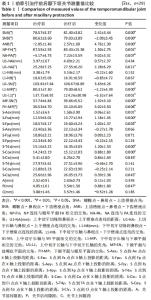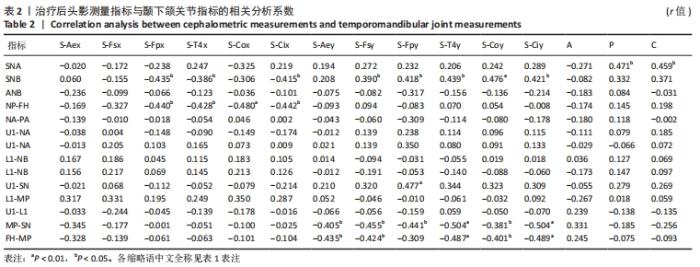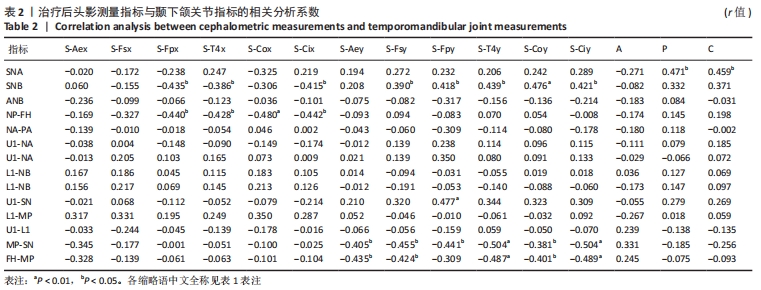[1] 傅民魁,张丁,王邦康,等.中国25392名儿童与青少年错牙合畸形患病率的调查[J].中华口腔医学杂志,2002,37(5):371-373.
[2] 房兵,金作林,白玉兴,等.儿童和青少年早期错牙合畸形诊治策略的专家共识[J].上海口腔医学,2021,30(5):449-455.
[3] PROFFIT WR, FIELDS HW, SARVER DM. Contemporary orthodontics. 5nd ed. St. Louis, Missouri:Mosby-Year Book, 2013:462.
[4] LIANG S, WANG F, CHANG Q, et al. Three-dimensional comparative evaluation of customized bone-anchored vs tooth-borne maxillary protraction in patients with skeletal Class III malocclusion. Am J Orthod Dentofacial Orthop. 2021;160(3):374-384.
[5] LIU Y, HOU R, JIN H, et al. Relative effectiveness of facemask therapy with alternate maxillary expansion and constriction in the early treatment of Class III malocclusion. Am J Orthod Dentofacial Orthop. 2021;159(3):321-332.
[6] 逯之瑶,王健,党亮生,等.两种上颌前牵方式分别联合快速扩弓疗效差异分析[J].实用口腔医学杂志,2021,37(3):362-366.
[7] 张世珍,赖文莉.骨性Ⅲ类错牙合畸形上颌骨前牵引方法及辅助扩弓的研究进展[J].国际口腔医学杂志,2021,48(3):354-361.
[8] 李静,王旭霞.前方牵引反作用力对颞下颌关节区受力状况影响的有限元研究[J].临床口腔医学杂志,2013,29(9):519-523.
[9] CHAUDHRY A, SIDHU MS, CHAUDHARY G, et al. Evaluation of stress changes in the mandible with a fixed functional appliance: a finite element study. Am J Orthod Dentofacial Orthop. 2015;147(2):226-234.
[10] 董瑞,周芹,张君.三类错颌前牵引角度及其反作用力的探究[J].临床医学进展,2021,11(8):3848-3856.
[11] GRANDORI F, MERLINI C, AMELOTTI C, et al. A mathematical model for the computation of the forces exerted by the facial orthopedic mask. Am J Orthod Dentofacial Orthop. 1992;101(5):441-448.
[12] NOGAMI S, YAMAUCHI K, ODASHIMA K, et al. Influence of oestrogen deficiency and excessive mechanical stress on condylar head of mandible. Oral Dis. 2020;26(8):1718-1726.
[13] MITANI Y, CHOI B, CHOI J. Anterosuperior protraction of maxillae using the extraoral device, RAMPA; finite element method. Comput Methods Biomech Biomed Engin. 2018;21(13):722-729.
[14] YAGCI A, UYSAL T. Effect of modified and conventional facemask therapy on condylar position in Class III patients. Orthod Craniofac Res. 2010;13(4):246-254.
[15] HUANG X, CEN X, LIU J. Effect of protraction facemask on the temporomandibular joint: a systematic review. BMC Oral Health. 2018;18(1):38.
[16] 刘亚非,王雅淋,左艳萍,等. X射线测量分析青少年骨性Ⅲ类患者前牵引治疗后颞下颌关节结构的改变[J].中国组织工程研究, 2021,25(8):1154-1159.
[17] DELAIRE J. Maxillary growth: therapeutic conclusions. Trans Eur Orthod Soc. 1971:81-102.
[18] EL H, CIGER S. Effects of 2 types of facemasks on condylar position. Am J Orthod Dentofacial Orthop. 2010;137(6):801-808.
[19] GALLAGHER RW, MIRANDA F, BUSCHANG PH. Maxillary protraction: treatment and posttreatment effects. Am J Orthod Dentofacial Orthop. 1998;113(6):612-619.
[20] ARAT ZM, AKÇAM MO, GÖKALP H. Long-term effects of chin-cap therapy on the temporomandibular joints. Eur J Orthod. 2003;25(5): 471-475.
[21] DEGUCHI T, UEMATSU S, KAWAHARA Y, et al. Clinical evaluation of temporomandibular joint disorders (TMD) in patients treated with chin cup. Angle Orthod. 1998;68(1):91-94.
[22] GAVAKOS K, WITT E. The functional status of orthodontically treated prognathic patients. Eur J Orthod. 1991;13(2):124-128.
[23] TANAKA E, REGO EB, IWABUCHI Y, et al. Biomechanical response of condylar cartilage-on-bone to dynamic shear. J Biomed Mater Res A. 2008;85(1):127-132.
[24] MANDALL N, DIBIASE A, LITTLEWOOD S, et al. Is early Class III protraction facemask treatment effective? A multicentre, randomized, controlled trial: 15-month follow-up. J Orthod. 2010;37(3):149-161.
[25] BUSCHANG PH, SANTOS-PINTO A. Condylar growth and glenoid fossa displacement during childhood and adolescence. Am J Orthod Dentofacial Orthop. 1998;113(4):437-442.
[26] MIMURA H, DEGUCHI T. Morphologic adaptation of temporomandibular joint after chincup therapy. Am J Orthod Dentofacial Orthop. 1996; 110(5):541-546.
[27] 崔燕,唐天琪.不同矢状骨面型患者颞下颌关节形态特征锥形束CT研究[J].中国实用口腔杂志,2016,9(6):348-353.
[28] 姚霜, 张琼华. Ⅲ类错牙合伴颞下颌关节紊乱病患者治疗前后关节间隙变化研究[J].口腔颌面修复学杂志,2001,2(1):2-4.
[29] HEFFEZ L, JORDAN S. A classification of temporomandibular joint disk morphology. Oral Surg Oral Med Oral Pathol. 1989;67(1):11-19.
[30] AFROZ S, NARITANI M, HOSOKI H, et al. Prevalence of Posterior Disc Displacement of the Temporomandibular Joint in Patients with Temporomandibular Disorders: Systematic Review and Meta-Analyses. J Oral Facial Pain Headache. 2018;32(3):277-286.
|







